Inca Civilization’s Greatest Achievements
Regarded as the largest empire in Pre-Columbian America, the Inca Civilization is most known for being way ahead of its time in so many human endeavors, especially when it came to stonework architecture. Even to this day, archaeologists and historians are left scratching their heads as to how the Inca architects and builders were able to construct structures with stones so close to each other that not even a sheet of paper could be placed in between the stone joints. And that engineering ingenuity was just one of the numerous achievements that the Inca Empire chalked. Another mindboggling fact about the Inca Empire is that they accomplished all of that without even using the wheel or using a proper beast of burden.
Here, we take a look at the 10 major achievements of the Inca Civilization.
Inca rulers expanded the Empire to a size of more than 2.1 million square kilometers

Inca Empire in the early 16th century
The Inca civilization is said to have reached its peak around the 16th century. In terms of size, the Inca Empire was undoubtedly the largest the continent of America had seen prior to the arrival of the Europeans to the region in 1532
The Inca Empire traces its roots to the Andean civilization that flourished around the 4th and 5th century BC. The Andeans are generally considered to be one of the few civilizations in history that emerged on its own.
The Incas began to form around the 12th century around what is today’s Peru. Real and serious expansion began around the early part of the 15th century. All of that began during the reign of Inca ruler Pachacuti, who went on sort of conquest rampage in the region. Pachacuti’s successors did a great job keeping the conquered territories together for a while. At its peak, the Inca rulers controlled large parts of what is today Bolivia, Peru, Chile, and some parts of Columbia and Argentina. Historians estimate that the territory of the Inca Empire reached a whopping 2.1 million square kilometers. And more than 12 million people called the empire their home.
The Inca Empire had a thriving economy despite not using money
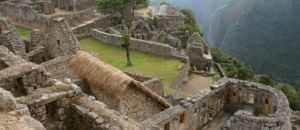
The Incas used a kind of central planning economy that redistributed the resources it collected back to the people. This system went a long way in mitigating the effect of bad farming seasons and droughts, as stored produce were distributed to places that needed it the most.
For a civilization that accomplished quite a lot of things, it is very surprising that they had no place for the use of money. The question that begs to be answered is how then did the Inca rulers keep their empire thriving economically and socially? Well, the Inca Civilization practiced a system (ayllu) that saw everyone work for the collective good of the society. Every abled adult male was assigned to a particular job, which was known as Mita. Those engaged in the production of goods like say farmers, the system required them to give about two-thirds of their produce to the empire. Those produce were stored in warehouses (tambos) dotted across the empire.
The system was moderately efficient in placing people with the right skill in the right job. So for example, an adult male with skills in harvesting crops would be placed in the agricultural sector.
The produce amassed by the Inca rulers was then redistributed back to the population. The Inca rulers were also responsible for keeping the inhabitant safe as well as organizing religious activities. They were responsible for building the necessary social and physical infrastructures to keep the economy thriving even though no form of money was used.
Increased their farm yield using terrace farming and a well-built drainage system
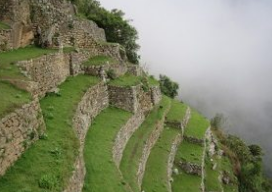
Inca – farm terraces on south east side of the citadel at Machu Picchu
The Inca Empire invested a lot of effort in developing agricultural techniques that augured well for them. One such technique was terrace farming which has farm lands shaped like steps. This technique helped the Incas properly deal with erosion caused by the excessive amounts of rain that fell in the region. They also constructed walls in and around the farm lands. Those walls in effect acted like radiators for the crops, thus they retained heat during the day and discharged the heat in the night to prevent crops for dying from frostbite.
The farm terraces the Inca built proved very useful in checking not just erosion but also helped mitigate the devastating effects of landslides.
The Incas independently came up with the rope suspension bridge
When it came to learning from other civilizations, the Inca Empire, like many of the civilizations in the region, were not as blessed as civilizations in say Mesopotamia or the Mediterranean. This is evident in the kind of inventions that they made. Historians have heaped enormous praise on the Incas for independently coming out with inventions like the rope suspension bridge. They wove threads from natural fibers like alpaca wool and llama to make the ropes of the bridge. And to keep those rope bridges safe for foot traffic, the Inca engineers rebuilt the bridges on a yearly basis.
It has been stated that some of the lengths of those bridges were up to 100 feet. The longest rope bridge reached close to 145 feet. At that length, the Incas possibly had the longest bridge in the world at the time.
Machu Picchu, one of the New Seven Wonders of the World
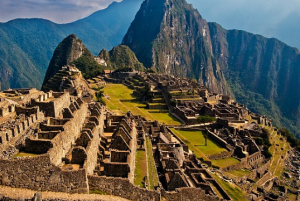
Declared a UNESCO World Heritage Site in 1983, Machu Pichu caught the world’s attention in the second decade of the 20th century when it was re-discovered.
Standing atop a mountain ridge of almost 2,500 meters above sea level, Machu Picchu was built around 1460 as a residence for the famous Inca ruler Pachacuti. It was built between the mountains of Huayna Picchu and Machu Picchu.
Archaeologists and historians often shower immense praise on the architectural works that went into building Machu Picchu. The site holds many monuments that give us a glimpse into how the Incas lived. Some examples of those monuments are the Intihuatana Stone, the Temple of the Sun, and the Room of the Three Windows.
The road system in the Inca Empire stretched for almost 45,000 kilometers
Most known for having the largest road system in pre-Columbian America, the Inca Empire built several thousands of kilometers roads that helped link up a territory of more than 2.6 million square kilometers.
Fully aware of the benefits that accrue from having an interconnected empire, every Inca ruler worked to expand the road system (known as Capac Ñan). What’s most impressive is that the Inca Empire chalked about a total of 50,000 kilometers in total length of their very elaborate road system. They had to build every kilometer of road in a terrain that is considered one of the least friendly for road construction. Such was the engineering that went into the construction that some of those roads are still passable even to this day.
Similar to Machu Picchu, the Inca road network received a UNESCO World Heritage Site. That honor came in 2014.
Kept accounting records and trade transactions using the quipus
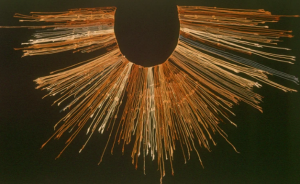
Inca Empire’s quipus
For many ancient civilizations, having a written language system in so many accrued a lot of benefits. The Incas were quite peculiar as they did not have a written language. Without any written language, how then did the Incas keep track of their affairs, especially when it came to trade and commerce? It turns out that the Incas had their own accounting system called the quipus. The system involved the use of strings of cotton or llama, which were then tied to make up knots. Those knots carried numerical weights and were used to keep track of quantitative data like farm produce, livestock, raw materials used, and debts owed.
The Incas engineering marvel in aqueducts
Terrace farming was not the technique used to increase crop yield by the Incas. Putting their engineering prowess to good use, the Incas were able to channel water from rivers in the region to irrigate their farm lands. For this, they constructed water canals from the rugged terrain to deliver the water to those farmlands. All of that was made possible with the state of the art hydraulic systems of the Incas.
Wheels? Who needs them?
The biggest surprise when it comes to the study of the Inca civilization is that one quickly finds out that they pulled off all those architectural marvels without the use of a wheel. What is more surprising is that some of the buildings constructed by the Inca engineers and stonemasons have stood the test of time, surviving earthquakes, floods and other natural disasters for more than half a millennium.
Stonemasons of the Inca Empire used limestone and granite as their major building material. Kind courtesy to the elaborate roads, these mountainous people carried those materials on the back of an alpaca to construction sites.
The Inca Empire developed an efficient communication system
By positioning a messenger at every mile along the vast network of roads, the Inca civilization could relay information at a whopping 150 miles (about 241 km) per day. This incredible system allowed not just messages but parcels as well to move across the empire very fast.
Other notable accomplishments of the Incas

Pachacuti Inca Yupanqui was the ninth Sapa Inca of the Kingdom of Cusco which he built into the Inca Empire. Image: 17th century painting, anonymous.
The Incas were big on cranial surgery. They drilled holes into the skull to stave off inflammation to the brain following a bad head injury. In some cases, tobacco, coca leaves, and alcohol was thrown into the mix to relieve the pain. It’s been said that about 90% of the time, this crude and archaic medical procedure of the Incas achieved the desired result.
The Incas are considered the first known people in history to use freeze-drying technique to preserve food items for longer periods of time. Today, NASA’s freeze-drying technique used for the foods astronauts eat in space certainly owes a debt of gratitude to the Incas.
The goal of the Inca government was to at all times keep the populace fed. This was their way of preventing the population from revolting against the Inca emperors. It’s simply remarkable how such collectivized and planned market economy worked wonders for the Incas. For starters, it meant that very few people suffered from starvation or housing problem.
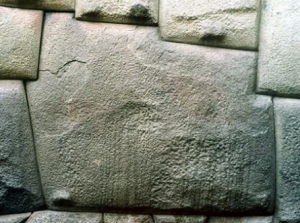
Inca architects and builders were able to construct structures with stones so close to each other that not even a sheet of paper could be placed in between the stone joints
Did you know?
- The word Inka in Quechua translates to “lord” or “ruler”. Quechua was the most dominant language among the Incas. The Spanish conquistadors erroneously used the word to refer to entire empire.
- The capital of the Incas was Cusco, which was also known as the City of the Puma. The city was founded by Inca ruler Manco Capac around 1200 AD. Machu Picchu is located in the city of Cusco, which the Incas believed was the center of the world.
- The Inca Empire and many of its cities, including the capital Cusco, ended following the arrival of Spanish explorers.
- Potatoes, corn and quinoa were staples among the Incas.
- The Incas did not have a written language.
- Typical of many ancient civilizations, the Incas were very superstitious people who believed that natural illnesses and disasters were caused by evil spirits and witchcraft. Thus shamans and protective spell doctors were very well respected members of the society, as they were seen as people who could ward off evil forces.
- To the Incas, a cure to mental illness could be found by drilling a hole into the skull of the patient. It was also believed that the hole allowed whatever demonic spirit that is in the individual to come out.
- Human sacrifices were not uncommon in the Inca Empire. It has been stated that several thousands of people, mostly concubines and servants, were killed to accompany Inca Huayna Capac in his journey to the underworld. Also, human sacrifices, mostly children, were believed by the Incas to thwart evil forces and natural disasters like earthquakes and famine.

























